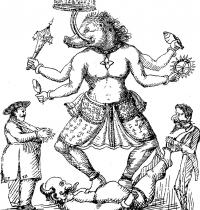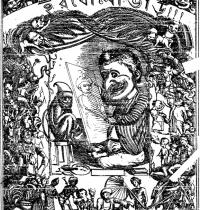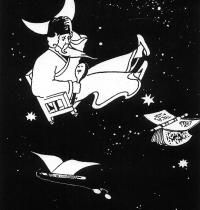Subhendu Dasgupta
Grant Period: Over two years
Subhendu Dasgupta, former professor of Economics at Kolkata University, was earlier supported by IFA to collect cartoons from 1874 to 2009 and document the works of 67 cartoonists. This grant will support Prof. Dasgupta to write/publish a book on the history of Bengali cartoons that appeared from the late 19th century to post-independence India, tracing the development of cartoons as an art form, in the process. The grant will also enable Prof. Dasgupta to collect and digitise the cartoons from that period.
Cartoons are an extremely important component of Bengal’s political and social history. However, mainstream art history has always accorded an outcast status to cartoons, and denied the visual form a place within it. This contributed to a sore lack of basic documentation of cartoon history, and Bengali cartoons in West Bengal, especially. The history of Bengali cartoons is closely connected to the history of India’s struggle for independence. During the freedom movement, Bengali cartoons were repeatedly used for political and social commentary. Apart from providing entertainment, cartoons served the purpose of mobilising opinion, raising issues, and fostering debates, protests, and criticism. In the post-independence era, cartoons have played a significant role in the formation of Bengali identity as well. Prof. Dasgupta’s book will look at the relationship between public life and cartoons while paying particular attention to individual cartoonists whose work has contributed significantly to developing the art form. He will also examine the creation of unique characters by several cartoonists, and attempt to ascertain the popularity and contemporary influences of those characters on public life. The analysis of style is an important aspect of his research, and Prof. Dasgupta will write in detail on the relationship between text and visual. He will interview cartoonists, analyse and interpret their work, distinguish and comment on drawing styles, and carry out a comparative study of the different styles of depiction.
In his book, Prof. Dasgupta will highlight how the cartoon served through early publications like Basantak, as a commentary on colonial domination, forms of self-representation, and most importantly, on the modernisation process. Starting in the late 19th century when the first significant cartoon production appeared, all the way to the post-independence period, the book will illustrate profusely with images, critiquing national reconstruction rather than alien rule. The book will be divided into six chapters with the final one focusing on women in Bangla cartoons. Prof. Dasgupta will look at the representation of women in cartoons of the time. The chapter will be a critique of the patriarchal undertones present in the cartoons. Since the book (to be published by Chhatim) shall contain a large number of cartoon images, Prof. Dasgupta will employ the services of a professional book designer and a printing consultant. In addition, Prof. Dasgupta will collect cartoons from about 40 cartoonists whom he discovered after the completion of the first phase. He will also conduct interviews with some cartoonists from Bengal, enabling him to address questions of form and style while writing the book. This grant enables him to complete the work of digitising his earlier collection of cartoons. Prof. Dasgupta will curate an exhibition on Bangla cartoons and prepare a comprehensive catalogue on the contents of the exhibition. This endeavour will be supported by the Victoria Memorial Hall, Calcutta.



